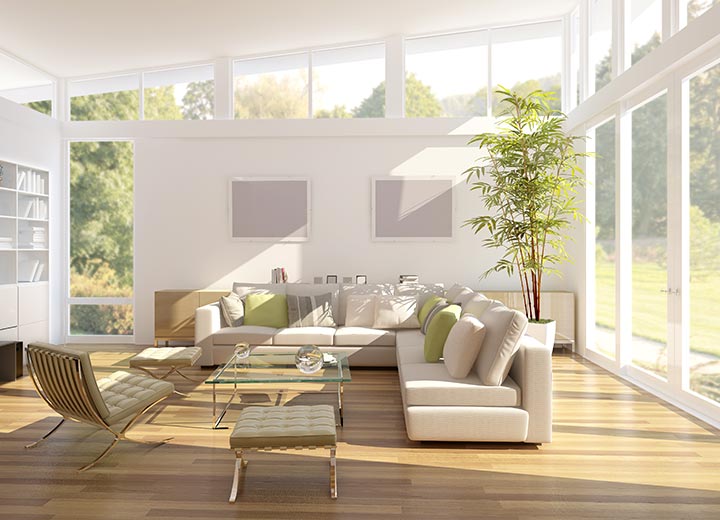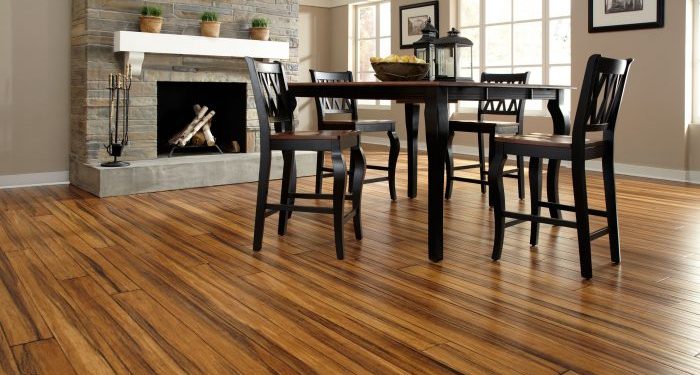It’s really amazing how making appointed decor choices can really elevate a home. The flooring may seem like one of those last decisions to make in an architectural project, and rightly so, because floors pull the entire look and feel of a home and add to the ambiance you want to create. However, it shouldn’t be an afterthought decision. To make the right decisions for flooring, you need to know the various choices available to you.
If you’ve always wanted to use bamboo flooring, understanding the various features such as grain, color, and pattern will definitely help in creating that dramatic impact on the entire look and feel of any architectural project you’re working on. It will also help you choose which type of bamboo to use in which environment.
This article can serve as a guide and inspiration in helping you install bamboo floors in different environments, matching it to different decors and styles.
Bringing a sense of Zen to an open kitchen
The characteristics of the natural wood of the bamboo enable it to be paired beautifully with hardwood features. Bamboo works beautifully well with oak stained hardwood, so if your cabinets or countertops use this material, it will create a soft contrast of natural wood grain patterns, evoking the presence of tall trees rising from a forest. To enhance a Zen-like vibe, adding stone elements to counters and barstools will provide a nice juxtaposition against the brown of the floors and the cabinets.
Adding bamboo flooring to an open kitchen layout enhances the Zen flow naturally into other areas of the house that may have different flooring, such as a carpeted dining area. Wood and bamboo are natural and complementing materials, while the gray granites add different textures to the kitchen.
Adding natural features to sliding glass doors
You can definitely expand the use of bamboo beyond the floor to include cabinets and shelves. Extending the bamboo flooring concept to sliding doors adds a very Eastern element to your home decor, giving the undertones of Japanese sliding dividers. Bamboo flooring also creates a clean and sleek look, especially when styled with stainless steel elements of furnishings such as window and door frames. You’ll get a stylish and uncluttered look.
If you have darker glass door frames, bamboo floor helps to expand the space as it adds an elegant contrast. Create the visual of a weathered look of the pier beyond. Bamboo flooring can provide a space that exudes a feeling of calm, comfort, peace, and solace.

Contrasting uncarbonized bamboo against a white kitchen
When adding bamboo flooring, remember that the lighter the color, the greater the strength and durability, which is the opposite of hardwood flooring. Bamboo comes in a natural light tan color. For it to have a darker color, bamboo usually goes through the carbonization process, which is the process of applying heat and pressure to obtain a dark, smoky color. An unstained and untreated color may be a good choice if you like the contemporary style. The soft of the bamboo color complements white walls, whether in your kitchen or living room.
Creating natural lines and features with horizontal bamboo
Usually, when bamboo is installed, it’s usually in a vertical style. If you want to create an added dimension to your flooring, adding them as flat strips horizontally would create a unique natural look, with a distinct appearance.
Vertical bamboo flooring
Of course, the ever-popular vertical bamboo flooring creates more distinctive lines for your spaces. If you want to use bamboo flooring vertically, the bedroom is a great space for this as it’s less defined with hard lines, creating a soft and comfortable look that complements the softness of bedding, rugs, and blankets.
Creating a shabby chic vibe
Bamboo flooring is extremely versatile, as there are varying styles and color palettes that can match the bamboo’s soft naturalness. For shabby chic decor, bamboo flooring will complement tones from light pink to off-white. Anchor the entire room with deep tones such as chestnut furniture and a dark fluffy rug in black. The soft brown shade of bamboo flooring complements an architectural project, such as a cottage or a one-bedroom apartment.
Adding contrast with purple accents
Didn’t think bamboo and purple go well? Bamboo is extremely versatile, and you can pair it with different color palettes to create a distinctive look and feel for your home. For instance, if you pair bamboo with white features from the walls to the furnishings, then you’ll get a more light, crisp, energetic space – works well for yoga studios and meditation areas. However, if you want something more royal and elegant, bamboo flooring matched with a bright purple rug, for instance, creates a sharp contrasting look. This effect helps create focus and attention, adding a regal flair, especially when your furniture is a little worn.
Adding a natural vibe to the living room
Create a united look and feel that flows from the kitchen to the living room by extending your bamboo flooring to cover both these rooms. If you want to amplify the natural vibe throughout these two spaces, potted plants and green features that mimic a forest can add a stylish, natural look and bring that Zen garden vibe. Link to nature by creating a focal point, either by focusing the attention at a fireplace or a statement wall in a deep green tone. Adding some art together with plants and gold accents can definitely elevate the living room and create a natural sense of flow from the floor to the ceiling.
There are many ways to enhance the look and feel of a home to create a natural, calming vibe. If you like the bamboo flooring, check out Homes Pure, where you can find various bamboo flooring options. Adding bamboo flooring to your home definitely elevates its look and vibe, because the minute you enter into a home with bamboo flooring, an unmissable tranquil and a serene vibe is felt. Movement and energy are ever-present in a home with bamboo flooring, and it connects every part of the home with this peaceful flow.





